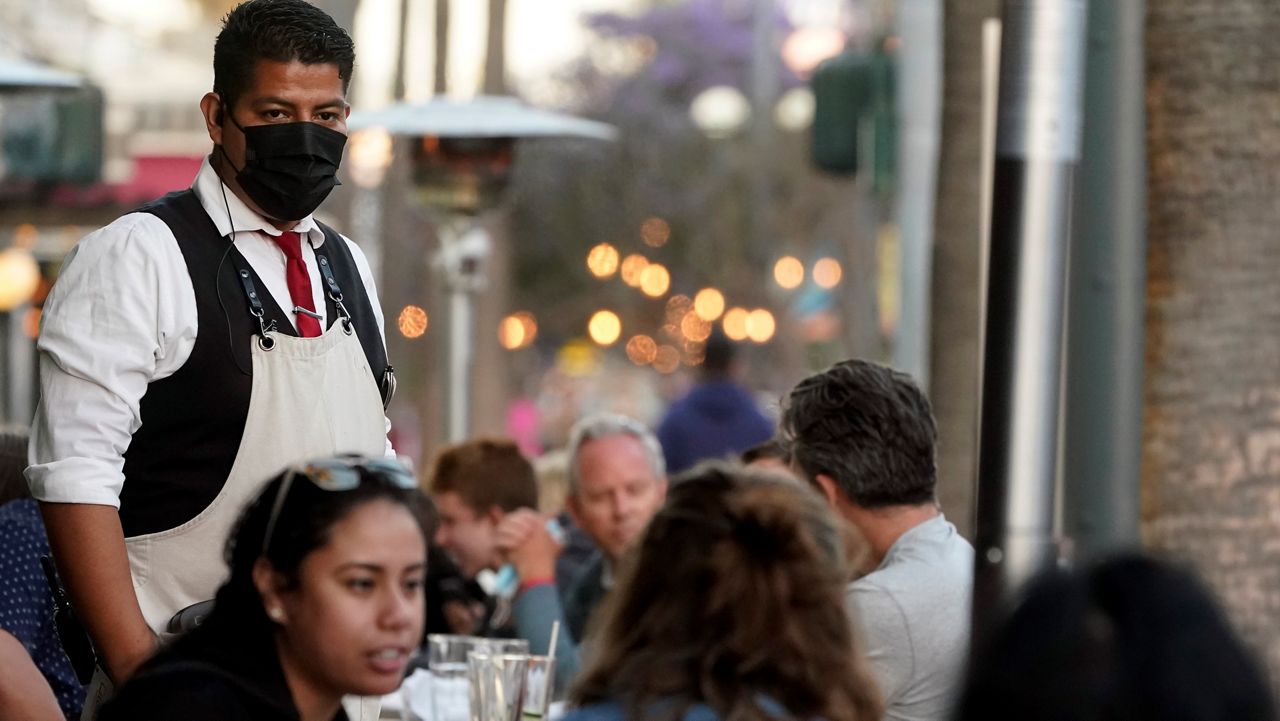IRVINE, Calif. — When restaurants were stuck in a pandemic slump fueled by rising COVID-19 case rates and indoor capacity restrictions, owners looked for help.
Cities across California answered by allowing businesses to sprawl out onto sidewalks and into parking lots. Property owners were a part of the equation, allowing tenants to spill over into communal seating areas designed for collective use.
Now Irvine is considering a move that would make these kinds of makeshift dining options permanent.
But as rents skyrocket — for residential and commercial properties — property owners are considering how they can charge tenants who are benefiting from a larger serving area. Some tenants had access to just a dining room. Now, many of them have additional outdoor space, for free.
Joseph Lising, a managing director for real estate firm Cushman & Wakefield, said there are a lot of variables to consider before putting a dollar value on outdoor space.
“How the landlords incorporate that into their business plan might not be clear right away,” Lising said.
The value of that space can depend on the quality of the furniture, how close it is to traffic, or whether it’s in a parking lot. While landlords know how to charge for indoor seating space, the formula for outdoor space has more variables.
One solution is revenue sharing in place of monthly rental payments.
Some landlords in Europe, Lising said, have started charging restaurant operators a percentage of their revenue. When business does well, landlords win. When business is depressed, steep rents do not burden restaurants.
That model, he said, may be of interest to some landlords in California, and perhaps some tenants, who are keen on avoiding skyrocketing rental prices.
Some businesses have been able to spread out onto grass, or spacious communal areas. Others have wedged tables wherever they could fit. Areas in Irvine such as Stone Creek Plaza and University Town Center already have large areas for additional seating. Pho Ba Co stretched its seating over into neighboring, unused space while restaurants across from the University of California, Irvine benefited from existing seating.
Other cities have already extended their outdoor dining programs. Laguna Beach pushed its outdoor dining to 2023. Restaurants there such as Moulin and Brussels Bistro have largely shut down Forrest Avenue and the parking that came with it. Each has constructed additional seating space boosting seating capacity or allowing for additional social distancing.
Customers have been keen to return to in-person dining, straining many restaurants as they battle through supply chain problems and staffing shortages. Patrons have been willing to dine in person, with optimism peaking as the spring and summer months approach.
As more cities extend outdoor dining and some, like Irvine, seek to make it permanent, owners may look at ways to pad rent prices.
Lising said that while some landlords require tenants to show sales figures, most do not, complicating the shared revenue model.
“The challenge of that is a lot of the restaurants don’t like to divulge their sales volume,” he said.
Movement in outdoor dining remains influx with more changes or additions regularly surfacing at city council meetings.
Among them is Costa Mesa, which recently extended its program to 2022.



